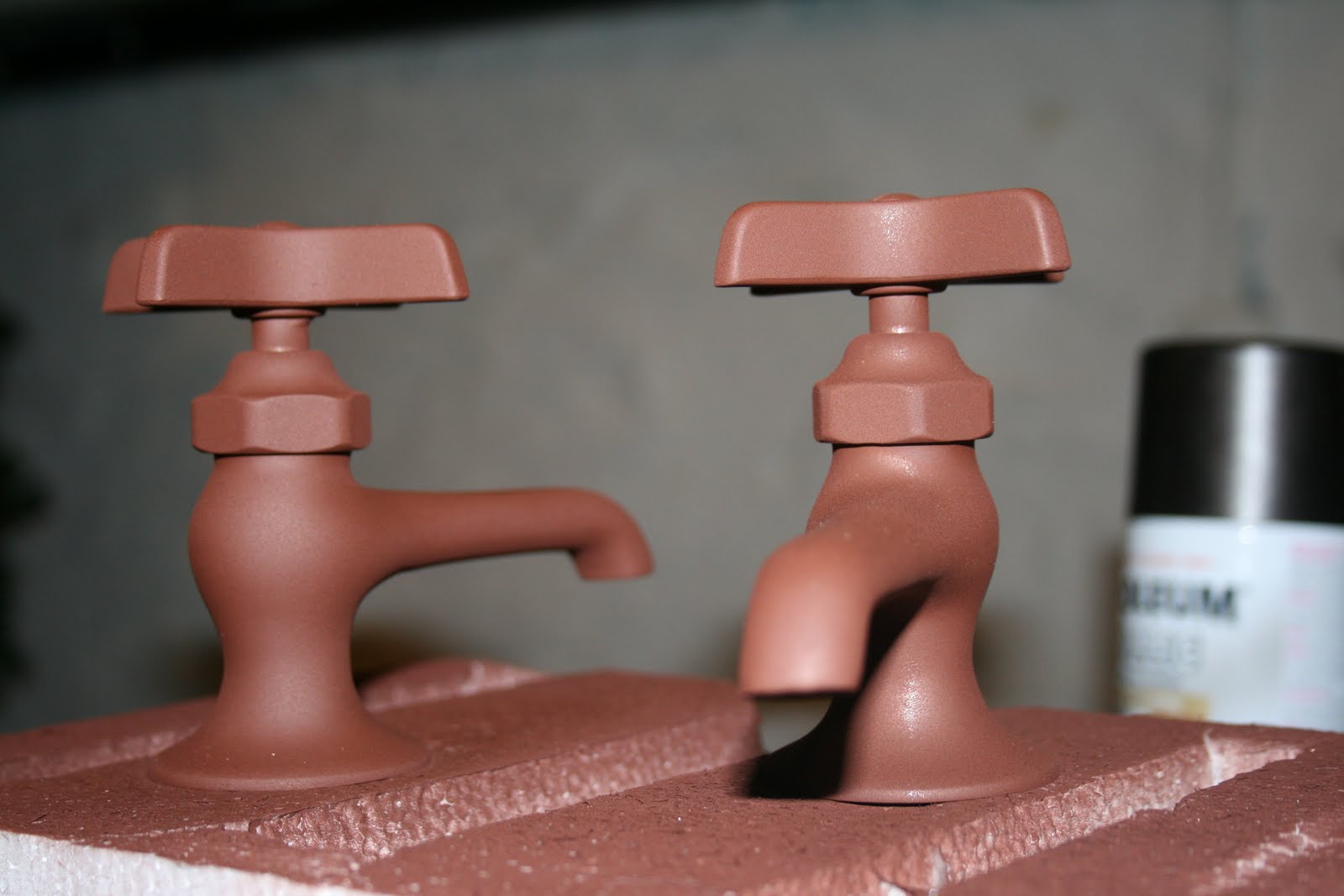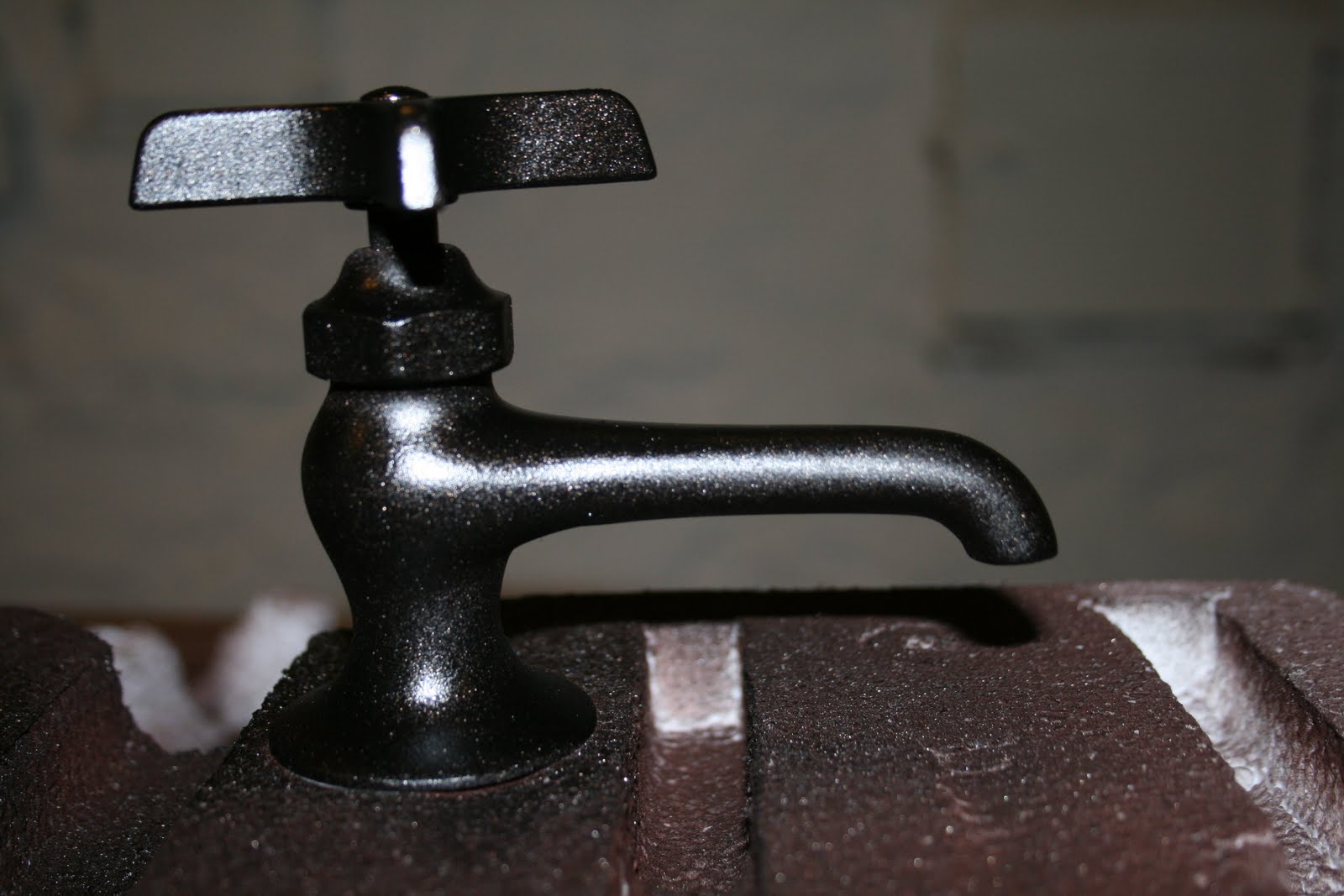Bathroom Faucet Styles and Finishes: Painting Bathroom Faucet Fixtures
Choosing the right bathroom faucet is a crucial step in any bathroom renovation project. It’s not just about functionality; it’s about aesthetics and the overall design of your space. Bathroom faucets come in a variety of styles and finishes, each offering unique advantages and contributing to the overall look and feel of your bathroom.
Bathroom Faucet Styles
The style of your bathroom faucet can significantly impact the overall aesthetic of your bathroom. Different styles can complement different bathroom designs, from traditional to modern. Here are some of the most popular bathroom faucet styles:
- Widespread Faucets: Widespread faucets feature separate hot and cold handles that are mounted on the countertop, typically spaced 8 to 16 inches apart. This style is ideal for larger sinks and vanities, as it provides ample space for easy access and control. Widespread faucets often come in more elaborate designs, making them a great choice for creating a statement piece in your bathroom.
- Centerset Faucets: Centerset faucets have a single handle that controls both hot and cold water flow. The handles are mounted on a single plate, typically with a 4-inch spread. This style is a popular choice for smaller sinks and vanities, as it takes up less counter space. Centerset faucets are often more affordable than widespread faucets and are available in a wide range of styles.
- Wall-Mounted Faucets: Wall-mounted faucets are mounted directly to the wall, leaving the countertop completely clear. This style is a great choice for modern bathrooms, as it creates a sleek and minimalist look. Wall-mounted faucets are also a good option for smaller bathrooms, as they free up counter space. However, they require more complex installation and may not be suitable for all bathroom configurations.
- Single-Hole Faucets: Single-hole faucets are a modern and minimalist style that features a single handle and spout that are all mounted on a single hole in the countertop. This style is perfect for small sinks and vanities, as it takes up minimal counter space. Single-hole faucets are also available in a variety of finishes, making them a versatile option for different bathroom styles.
Bathroom Faucet Finishes
The finish of your bathroom faucet can significantly impact the overall look and feel of your bathroom. Different finishes can complement different bathroom styles and color palettes. Here are some of the most popular bathroom faucet finishes:
- Chrome: Chrome is a classic and timeless finish that is known for its durability and resistance to scratches and tarnishing. It is also easy to clean and maintain. Chrome faucets are a great choice for traditional and modern bathrooms.
- Brushed Nickel: Brushed nickel is a popular finish that offers a warm and sophisticated look. It has a subtle brushed texture that helps to hide fingerprints and water spots. Brushed nickel faucets are a great choice for contemporary and transitional bathrooms.
- Oil-Rubbed Bronze: Oil-rubbed bronze is a rich and warm finish that has a rustic and antique look. It is a great choice for traditional and farmhouse-style bathrooms. Oil-rubbed bronze faucets can be more susceptible to fingerprints and water spots, but they are still easy to clean and maintain.
- Matte Black: Matte black is a modern and sophisticated finish that has a sleek and minimalist look. It is a great choice for contemporary and industrial bathrooms. Matte black faucets can be more susceptible to fingerprints and water spots, but they are still easy to clean and maintain.
Functionality and Features

Bathroom faucets are more than just fixtures; they are functional components that play a crucial role in daily routines. The design and features of a faucet directly impact the user experience, from water flow control to ease of use.
Types of Bathroom Faucets, Painting bathroom faucet fixtures
Bathroom faucets are available in various designs, each offering distinct functionality and aesthetics.
- Single-Handle Faucets: These faucets offer a single lever for controlling both water temperature and flow. They are easy to use, allowing for quick and precise adjustments with one hand.
- Double-Handle Faucets: These faucets have separate handles for controlling hot and cold water. They offer precise temperature control, but they require two hands for operation.
- Touchless Faucets: These faucets utilize sensors to activate water flow without physical contact. They are ideal for hygienic purposes and are often found in commercial restrooms and kitchens.
Benefits of Faucet Features
Beyond basic functionality, bathroom faucets offer several features that enhance user experience and efficiency.
- Pull-Down Sprayers: These versatile features allow users to switch between a standard stream and a powerful spray, making it easier to fill pots, rinse dishes, or clean the sink.
- Temperature Control: Faucets with temperature control features ensure consistent water temperature, preventing sudden temperature changes and ensuring comfortable use.
- Water-Saving Technology: Some faucets incorporate water-saving features, such as aerators or flow restrictors, that reduce water consumption without compromising performance.
Bathroom Faucet Cartridges
The cartridge is a critical component of a bathroom faucet, responsible for regulating water flow and temperature. The type of cartridge used can significantly impact the faucet’s performance and longevity.
- Ceramic Disc Cartridges: These cartridges are durable and reliable, offering smooth and precise water control. They are often found in high-quality faucets and are known for their longevity.
- Ball Cartridges: These cartridges utilize a ball bearing system for water control. They are less common than ceramic disc cartridges but are known for their smooth operation and ease of repair.
- Compression Cartridges: These cartridges use a rubber washer to control water flow. They are less common in modern faucets due to their tendency to leak over time.
Installation and Maintenance
Installing and maintaining bathroom faucets is crucial for ensuring their functionality and longevity. Proper installation guarantees a leak-free and efficient system, while regular maintenance prevents common issues and extends the faucet’s lifespan.
Installing a Bathroom Faucet
Installing a bathroom faucet requires basic plumbing knowledge and tools. Here’s a step-by-step guide:
- Turn off the water supply: Locate the shut-off valves for the hot and cold water lines leading to the faucet and turn them off completely.
- Remove the old faucet: Unscrew the old faucet from the sink or countertop using a wrench. Be careful not to damage the sink or countertop during removal.
- Clean the installation area: Remove any debris or old sealant from the faucet mounting holes.
- Install the new faucet: Align the new faucet with the mounting holes and tighten the mounting nuts using a wrench.
- Connect the water lines: Attach the hot and cold water lines to the faucet using appropriate fittings and tighten them securely.
- Turn on the water supply: Slowly turn on the water supply valves and check for leaks.
- Test the faucet: Run the water through the faucet to ensure proper functionality and water pressure.
Troubleshooting Common Faucet Problems
Faucet problems, such as leaks and low water pressure, can be frustrating. Here are some common issues and their solutions:
- Leaking faucet: A leaking faucet can be caused by worn-out washers, loose packing nuts, or a faulty cartridge.
- Low water pressure: Low water pressure could be due to a clogged aerator, a partially closed shut-off valve, or a problem with the main water supply line.
Maintaining Bathroom Faucets
Regular maintenance can prevent common faucet problems and extend their lifespan. Here are some tips for maintaining your bathroom faucets:
- Clean the faucet regularly: Wipe down the faucet with a soft cloth and mild soap to remove dirt and grime.
- Clean the aerator: Unscrew the aerator and clean it with a toothbrush or a small wire brush to remove any mineral deposits or debris.
- Lubricate the faucet: Apply a few drops of silicone lubricant to the faucet handles and cartridges to prevent them from sticking.
- Check for leaks: Regularly check for leaks around the faucet base and handles.
- Replace worn-out parts: If you notice any worn-out parts, such as washers, o-rings, or cartridges, replace them promptly.
Choosing the Right Bathroom Faucet

Selecting the perfect bathroom faucet is an essential part of any bathroom renovation or upgrade. With so many styles, finishes, and features available, it can be overwhelming to choose the right one for your needs. This section will provide a comprehensive guide to help you make an informed decision.
Factors to Consider
When choosing a bathroom faucet, several factors should be considered to ensure it meets your specific requirements and preferences.
- Budget: Bathroom faucets come in a wide range of prices, from budget-friendly options to high-end luxury models. Determine your budget before you start shopping to narrow down your choices.
- Style: Consider the overall design of your bathroom and choose a faucet that complements the existing decor. Popular styles include contemporary, traditional, transitional, and modern.
- Functionality: Consider the features you need and want in your faucet, such as single-hole or widespread installation, hot and cold water controls, and different spray settings.
- Installation Requirements: Check the installation instructions to ensure the faucet is compatible with your existing plumbing and countertop.
Selecting Faucets for Different Bathroom Spaces
The type of faucet you choose should be appropriate for the specific bathroom space.
- Master Bathrooms: Master bathrooms are typically larger and more luxurious, so you can consider high-end faucets with advanced features and finishes.
- Guest Bathrooms: Guest bathrooms are often smaller and more functional, so a simple and stylish faucet with basic features is usually sufficient.
- Powder Rooms: Powder rooms are small and primarily used for handwashing, so a compact and stylish faucet is ideal.
Bathroom Faucet Brands Comparison
The following table compares some popular bathroom faucet brands and their key features:
| Brand | Key Features | Price Range |
|---|---|---|
| Delta | Known for their durability, innovative features, and wide range of styles. | $50 – $500+ |
| Kohler | Offers a wide selection of classic and modern designs, with a focus on quality and craftsmanship. | $75 – $700+ |
| Moen | Known for their reliable performance, water-saving features, and stylish designs. | $40 – $400+ |
| Grohe | Offers high-quality, European-inspired faucets with advanced features and sleek designs. | $100 – $1000+ |
